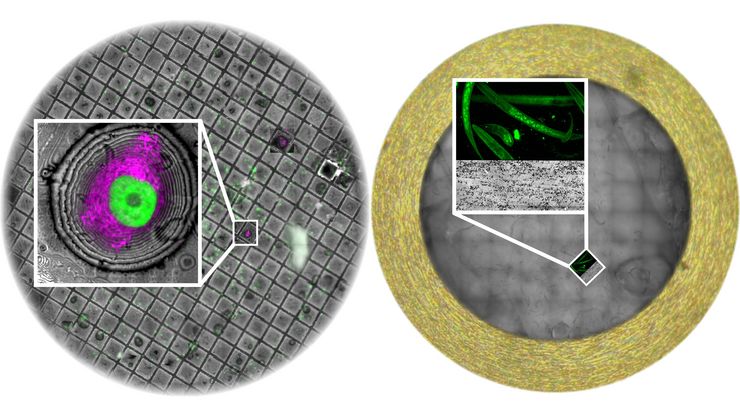About ATTO-TEC
ATTO-TEC GmbH was founded in autumn 1999 as a spin-off of the University of Siegen. The decisive factor was the scientific experience of the four founders with organic laser and fluorescent dyes, some of which lasted decades.
In particular, Prof. Drexhage's research team focused on the synthesis and development of long-wavelength fluorophores for the labeling of biomolecules in the 1990s, as fluorescence-based techniques were established as sensitive detection and analysis methods in the emerging field of life sciences. Thus, in the summer of 2000, the young company was able to present its own market-ready products as a manufacturer of fluorescent dyes for medicine, diagnostics and biology at ACHEMA in Frankfurt am Main.
AttoTec was acquired by Leica in 2024 and is a wholly owned subsidiary of Leica Microsystems.
Contact a local imaging specialist for expert advice on the right consumables for your needs and budget.
Key Benefits
High Photostability and Brightness
ATTO dyes are known for their superior photostability and brightness, making them ideal for biological imaging and analysis.
Versatility
These dyes are widely used in molecular biology techniques, such as real-time PCR, DNA sequencing, and fluorescence in situ hybridization (FISH).
Unique Molecular Structure
Their rigid chromophore structure ensures consistent optical properties, reducing variations caused by solvents or temperature.
Portfolio of 43 fluorophores with over 400 different modifications
ATTO-TEC GmbH now has a portfolio of 43 fluorophores with over 400 different modifications. These partially patented fluorescence markers cover the entire visible spectral range from ultraviolet to near infrared.
Our customers – including renowned research institutes and international companies – appreciate the particularly high purity and excellent quality of our ATTO dyes. In addition to our readily available catalogue products, we offer the service of individual customer syntheses. In close cooperation with the client, our qualified team develops tailor-made dyes or derivatives for its special application.
The satisfaction of our customers is our top priority. Please do not hesitate to contact us if you have any problems or questions regarding our particular products as well as fluorescence or organic dyes. We will be glad to help you!











